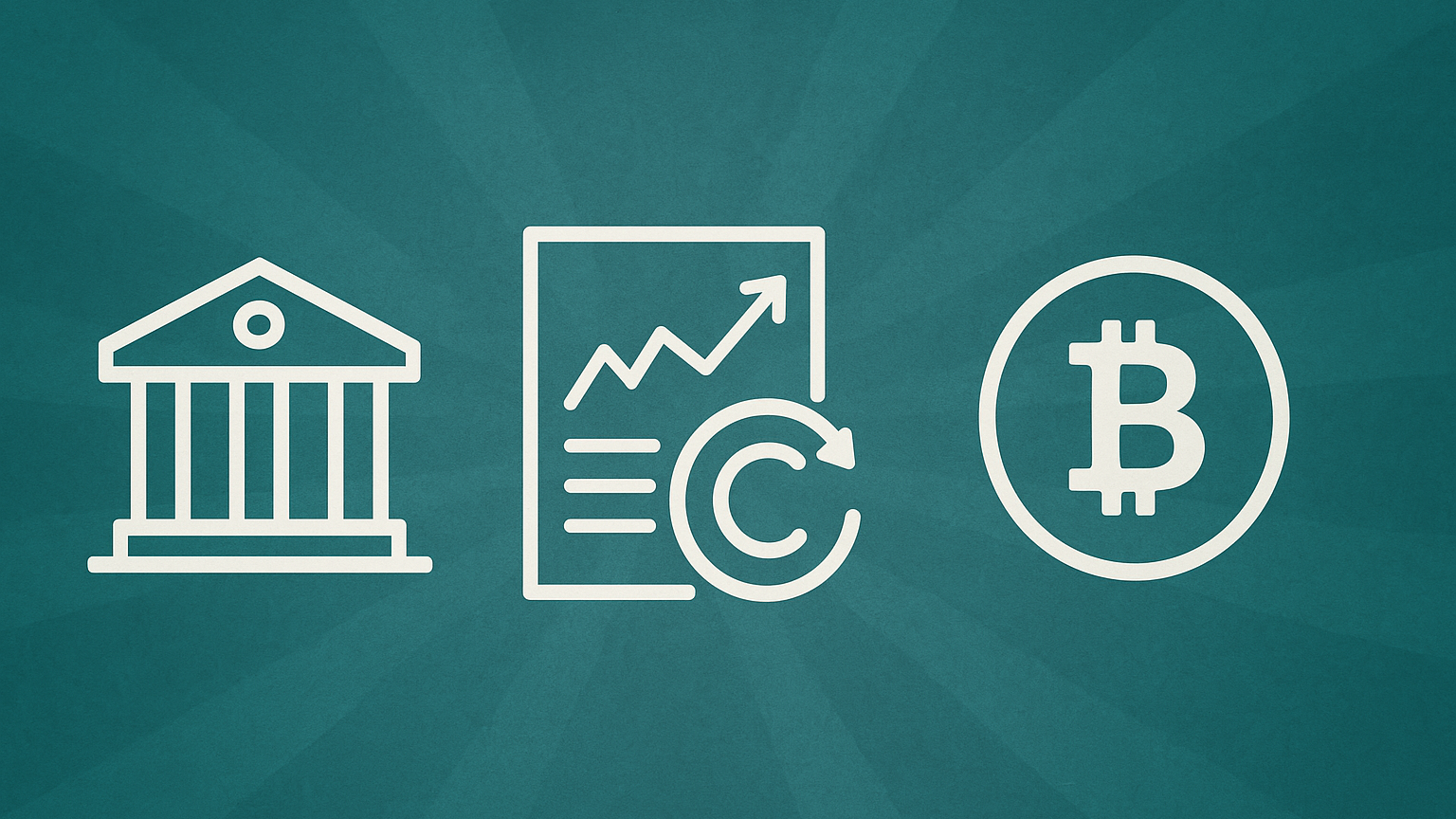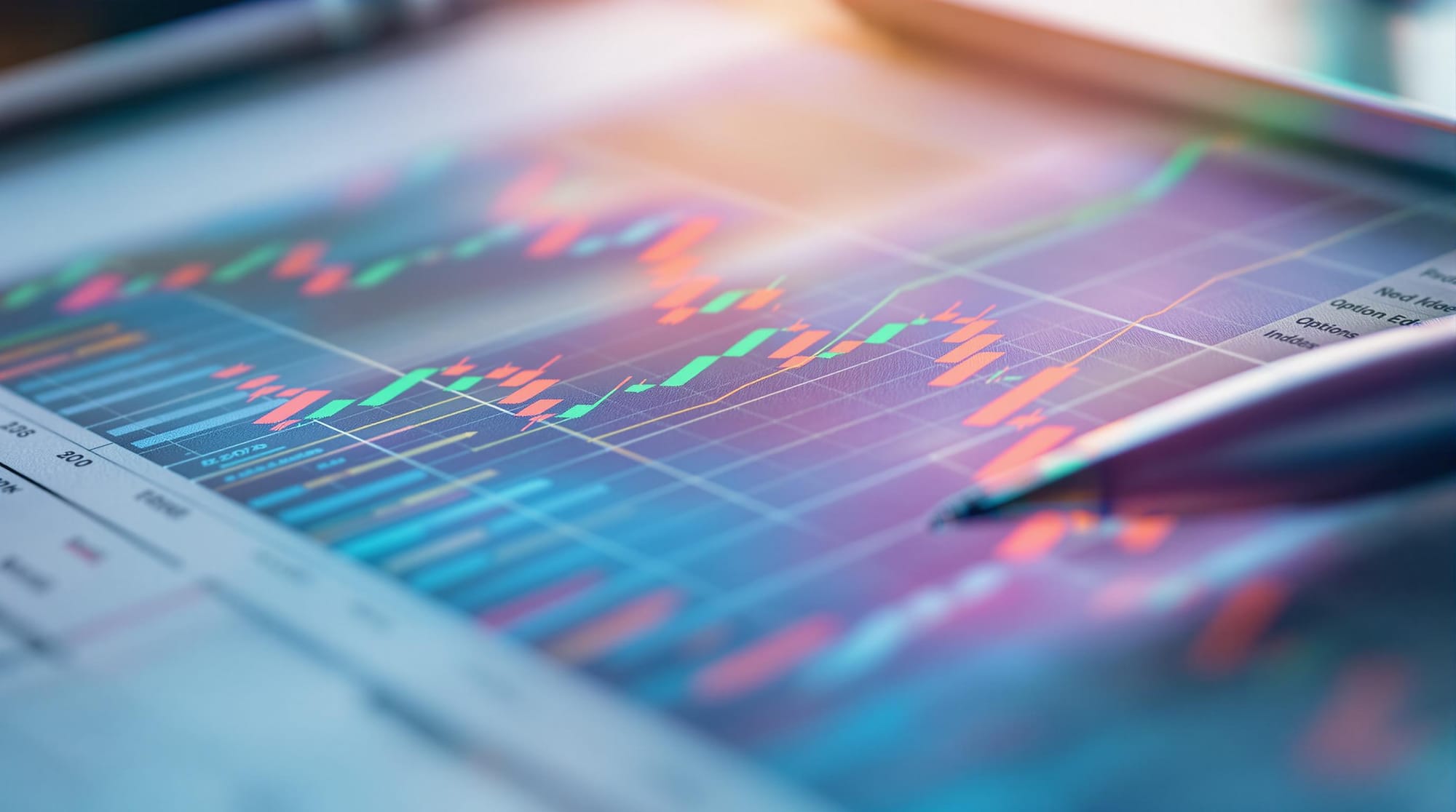Explore the differences between stock, options, and cryptocurrency exchanges, including trading hours, risks, and best use cases for each.
- Stock Exchanges: Trade company shares like Apple or Tesla. Regulated, stable, and ideal for long-term investments. Typical trading hours: 9:30 AM - 4 PM ET.
- Options Exchanges: Buy and sell contracts based on underlying assets. Offers leverage but comes with higher risks. Used for hedging or speculation.
- Cryptocurrency Exchanges: Trade digital assets like Bitcoin 24/7. High volatility, minimal regulation, and lower entry barriers, but significant risks.
Quick Comparison
| Exchange Type | Trading Hours | Regulation | Risk Level | Best For |
|---|---|---|---|---|
| Stock | 9:30 AM - 4 PM ET (Weekdays) | High | Moderate | Long-term investments |
| Options | 9:30 AM - 4 PM ET (Weekdays) | High | High | Hedging or speculative trades |
| Cryptocurrency | 24/7 | Low | Very High | Day trading or high-risk bets |
Each exchange type offers unique benefits and risks. Stocks are stable and regulated, options provide leverage for advanced strategies, and crypto markets operate non-stop with high volatility. Choose based on your goals, risk tolerance, and trading style.
Stocks vs. Options Explained
1. Stock Market Trading
Stock exchanges are at the heart of global finance. Together, the New York Stock Exchange (NYSE) and NASDAQ represent a combined market value of over $50 trillion. These platforms allow both individual and institutional investors to buy and sell company shares.
Today, most stock exchanges function electronically, though some, like the NYSE, still maintain physical trading floors. Established in 1792 through the Buttonwood Agreement, the NYSE now handles an average of 223 million shares during its closing auction, showing the sheer scale of modern electronic trading.
Here’s how stock exchanges are structured:
| Exchange Type | Key Features | Best Use Case |
|---|---|---|
| Auction Exchanges | Uses a bidding process | Ideal for large-cap stocks |
| Dealer Markets | Prices set by dealers | Suitable for less liquid securities |
| Electronic Exchanges | Matches trades automatically | High-frequency trading |
| Over-the-Counter (OTC) | Direct trades between parties | For unlisted securities |
Historically, large domestic stocks have delivered an annualized return of 9.7% over the past two decades, making stock exchanges a key player in long-term investing.
Each exchange has its own listing requirements. For instance, the NYSE charges an initial fee starting at $50,000, plus $0.004 per share (with a minimum of $150,000 and a maximum of $295,000). Annual fees are $0.00113 per share, with a minimum of $71,000.
While the NYSE is known for hosting established large-cap companies, NASDAQ tends to attract tech and growth-focused firms. This distinction became even more apparent in 2024 when India overtook Hong Kong to become the world’s fourth-largest market by capitalization.
Stock exchanges are tightly regulated to ensure fairness and transparency. In the U.S., the Securities and Exchange Commission (SEC) plays a key role, tasked with:
"protect investors, maintain fair, orderly, and efficient markets, and facilitate capital formation."
For investors, stock exchanges offer several benefits:
- Transparent pricing based on supply and demand
- Strong corporate governance standards
- Regular financial disclosures by listed companies
- Diverse investment options
- Opportunities for long-term wealth growth
That said, risks like price swings and liquidity challenges remain. To navigate these markets effectively, investors often rely on diversified strategies across sectors and styles, paired with a focus on long-term goals.
Understanding how stock exchanges work provides a solid foundation for diving into the complexities of options markets.
2. Options Market Trading
After diving into stock markets, it's time to look at the options market, which operates on a different set of rules. Instead of trading direct ownership, options exchanges deal in contracts. A prime example is the Chicago Board Options Exchange (CBOE), which uses advanced systems to ensure market integrity and safeguard participants.
In this market, market makers play a key role by providing liquidity through continuous bid-ask quotes. To prevent manipulation, the CBOE enforces strict limits.
Margin Requirements by Position Type
Margin requirements differ depending on the type of position held. Here’s a quick breakdown:
| Position Type | Initial Requirement | Key Consideration |
|---|---|---|
| Long-term Equity Options | 75% of total cost | Applies to options with over 9 months to expiry |
| Short Equity Calls | 100% proceeds + 20% underlying value | Minimum of 10% of the underlying security value |
| Short Index Puts | 100% proceeds + 15% index value | Minimum of 10% of the exercise price |
These requirements significantly impact the risks and opportunities for option writers, as regulatory documents emphasize:
"Margin requirements for option writers are complex and are not the same for every type of underlying interest... margin requirements can have an important effect on an option writer's risks and opportunities."
Liquidity in Options Trading
Liquidity is a critical factor in options trading. Data shows that over 70% of option contracts are closed before expiration, around 20% expire worthless, and only about 5% are exercised.
"Effective liquidity protection is, in our view, fundamental for facilitating price discovery in liquid, electronic options markets."
Key liquidity metrics include:
- Trading volume: How actively a contract is traded.
- Open interest: The total number of contracts outstanding.
- Bid-ask spread: The difference between the highest bid and lowest ask prices.
- Available size: The number of contracts available at quoted prices.
Tools and Protections for Traders
Modern exchanges have introduced tools to enhance trading conditions, such as mass cancellation features and speed bumps designed to protect market makers during volatile periods. Additionally, Market Maker Protections (MMPs) help liquidity providers manage risk by:
- Setting execution limits.
- Allowing quick adjustments to quotes in volatile markets.
- Reducing aggregate position risks.
The Bigger Picture
With over 5,000 listed securities offering options in the U.S., the market supports both hedging and speculative strategies. However, the leverage involved means traders face amplified risks and rewards. As the market evolves with new technologies, these systems ensure fair pricing and orderly operations, laying the groundwork for comparing different types of exchanges.
3. Crypto Market Trading
Cryptocurrency exchanges have become a key part of the modern trading world, offering 24/7 global access to markets.
Exchange Structure and Operations
These platforms support two main types of transactions: crypto-to-crypto and fiat-to-crypto trading. They rely on order books to match buy and sell orders and typically operate without centralized government oversight.
Most exchanges use a tiered fee system for transactions, with varying costs for "makers" (those adding liquidity) and "takers" (those removing liquidity). Here's a quick look at the fees on some major platforms:
| Exchange | Maker Fee | Taker Fee | Special Features |
|---|---|---|---|
| Binance | 0.1000% | 0.1000% | 25% discount for BNB holders |
| Coinbase | 0.40% | 0.60% | Volume-based discounts |
| Kraken | 0.25% | 0.40% | Progressive fee reduction |
This structure plays a big role in shaping the overall trading experience, particularly when it comes to security and liquidity.
Security and Risk Management
Security is a top concern in crypto trading. Leading exchanges use tools like cold storage, two-factor authentication (2FA), encryption, and regular audits to protect user assets.
"When it comes to risks with cryptocurrency, I think the main one is that most people store their private key on their PC like any other file... And once a key is stolen, there's no getting it back. It's like having a credit card with no authentication check. That money is gone for good." - Bryan Gour, cyber innovation architect at City National Bank
Market Dynamics and Liquidity
Roughly 300,000 Bitcoin tokens are traded daily. This level of activity is crucial for understanding market liquidity, which directly impacts trading efficiency and pricing.
Trading Considerations
When trading on cryptocurrency exchanges, keep these factors in mind:
-
Market Access and Assets
Crypto markets never close, but it's important to remember that cryptocurrencies are speculative assets and don't generate dividends like stocks. By 2024, around 93 million Americans are expected to own some Bitcoin. -
Exchange Selection
Not all exchanges are created equal. For instance, Binance offers over 400 cryptocurrencies globally, but U.S. users are limited to roughly 150. Evaluate platforms based on trading pairs, liquidity, fees, geographic restrictions, and security measures.
As the crypto market grows, exchanges continue to refine their offerings to meet the needs of both institutional and individual traders, all while tackling challenges like security and evolving regulations.
Exchange Comparison
When comparing exchanges, it's important to consider factors like operating hours, fees, liquidity, risks, market maturity, and regulatory standards.
Operating Hours and Accessibility
Stock and options markets stick to fixed trading hours. For instance, the NYSE and NASDAQ are open from 9:30 a.m. to 4 p.m. ET on weekdays. However, pre-market trading can start as early as 4 a.m. ET, and after-hours trading may go until 8 p.m. ET.
| Exchange Type | Regular Trading Hours | After/Pre-Market Hours | Weekend Trading |
|---|---|---|---|
| Stock/Options | 9:30 AM - 4 PM ET | 4 AM - 9:30 AM, 4 PM - 8 PM ET | No |
| Crypto | Always open | N/A | Yes |
The 24/7 nature of crypto markets contrasts sharply with the structured hours of traditional markets. This difference impacts fees and liquidity, as explored below.
Fee Structures and Liquidity
Stock brokers often provide commission-free trading, but cryptocurrency platforms use more intricate fee models. For example, Coinbase charges between $0.99 for transactions under $10 and $2.99 for amounts up to $200.
Liquidity also varies significantly. In the crypto world, liquidity is highly concentrated - Binance accounts for 30.7% of global market depth. This concentration can affect both trading efficiency and price stability.
Risk Profiles
Each type of exchange comes with its own set of risks:
| Exchange Type | Key Risks |
|---|---|
| Stock | Market risk, business risk, liquidity risk |
| Options | Leverage risk, expiration risk, assignment risk |
| Cryptocurrency | Volatility, hacks, lost passwords |
"Options offer leverage, meaning the ability to magnify the value or purchasing power of the premium you pay - but leverage can come with the risk of significant losses."
– FINRA.org
These risks highlight the unique challenges traders face depending on the market they choose.
Market Maturity and Regulation
The structured trading hours, clear fee models, and established risk management of stock markets are supported by decades of regulatory oversight. In contrast, cryptocurrency markets are still developing. They operate with minimal regulation, and their frameworks are constantly evolving.
Interestingly, the top 8 crypto platforms handle 89.5% of global trading volume, showing a high level of concentration. This is very different from the broader distribution of activity across traditional stock exchanges, which can influence market stability and price discovery.
Which Exchange Fits Your Needs
Choosing the right exchange depends on your goals, how much risk you're comfortable with, and your trading habits.
For Beginning Investors
If you're just starting out, stock exchanges can be a good choice for their stability. Historically, the stock market has shown consistent growth, with the S&P 500 index fund averaging around a 10% annual return. Broad-market ETFs or mutual funds are often ideal for beginners because they provide diversification and reduce the risk compared to picking individual stocks.
For Active Traders
Your trading style and how often you trade will guide you to the right exchange:
| Trading Style | Best-Fit Exchange | Key Features |
|---|---|---|
| Day Trading | Crypto Exchanges | Open 24/7, high volatility, lower barriers |
| Swing Trading | Stock Exchanges | Regulated, predictable price patterns |
| Position Trading | Options Markets | Leverage with controlled risk |
If your priority is protecting your capital, you'll need to take a more tailored approach to manage market risks.
For Risk-Conscious Investors
For those focused on minimizing risk, here are some options to consider:
-
Stock Exchanges
Stock markets are highly regulated, making them a safer choice for long-term investors. Many brokers now offer commission-free trading for stocks and ETFs, keeping costs low. -
Options Markets
Options trading is ideal for investors looking to manage risk strategically. With fees typically ranging from $0.65 to $1 per contract, options allow you to limit potential losses while still having the chance for gains. -
Crypto Exchanges
While crypto markets offer the potential for high returns, they come with significant risks. Only about 1% of day traders in these markets consistently make a profit. It's best to allocate only a small portion of your portfolio to cryptocurrencies.
Time Commitment
How much time you can dedicate to monitoring your investments also plays a role in choosing the right exchange:
- Full-time traders: Crypto markets are open 24/7, making them ideal for continuous trading.
- Part-time traders: Stock markets operate during set hours (9:30 AM - 4 PM ET), providing a more structured schedule.
- Minimal time commitment: Long-term stock investing requires far less day-to-day involvement.
These differences highlight the maturity of traditional markets compared to others. Select the exchange that best matches your time availability, risk comfort level, and investment objectives.







